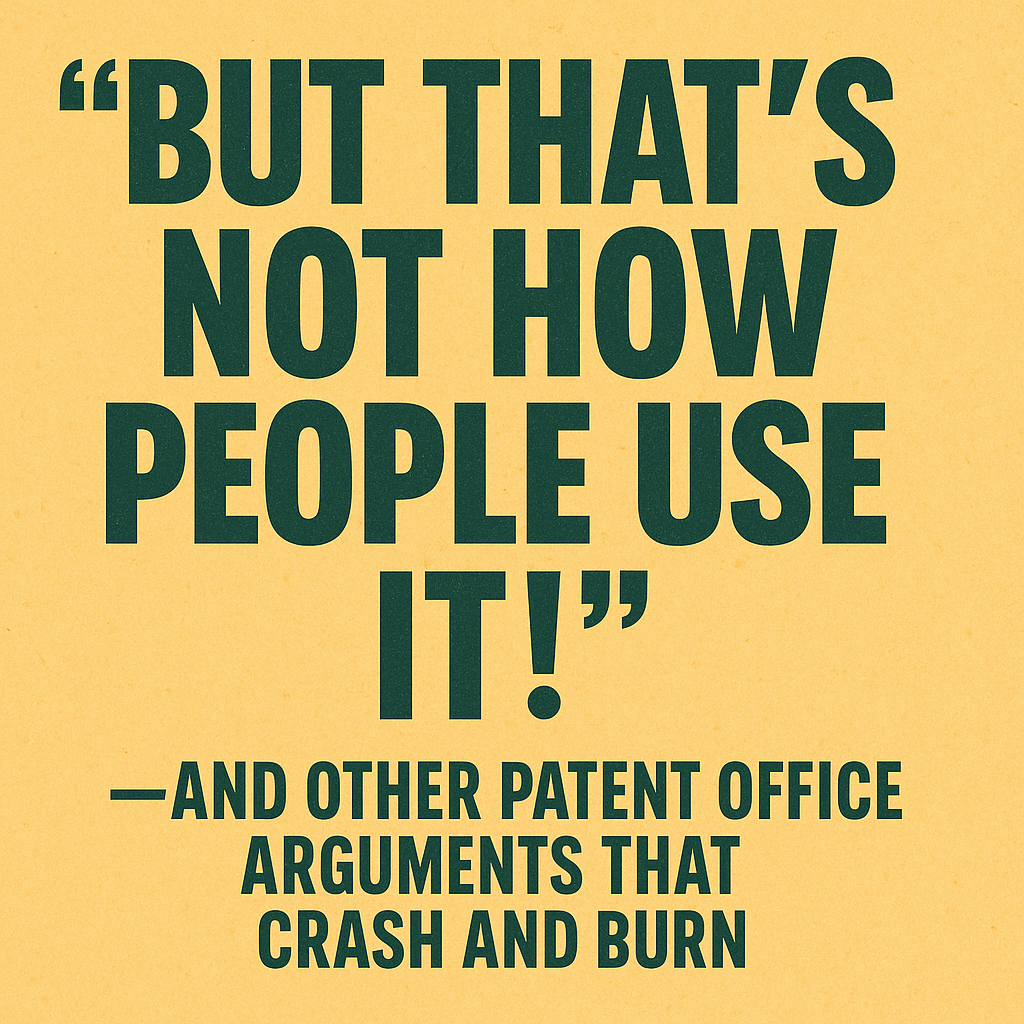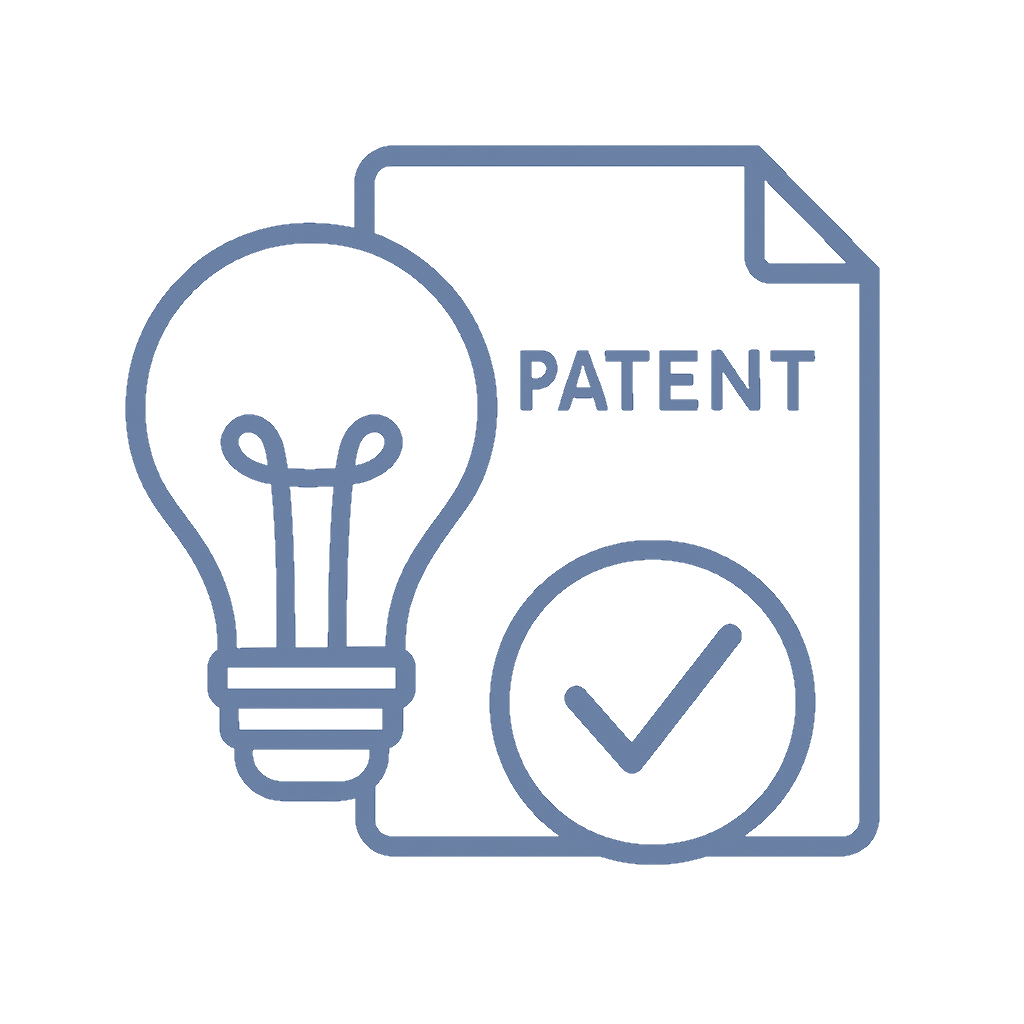📌 Quick Summary
1-Sentence Answer
Responding to patent office actions with “That’s not how people use it in real life” almost always fails—patent law cares about what’s disclosed in prior art, not practical usage.
The Article Overview
Ever tried to argue with a patent examiner by saying, “No one would actually use the invention that way”? Spoiler: It doesn’t work. This article explores why “real-world use” doesn’t trump what’s written in prior art, debunks common misconceptions, and shows you smarter strategies.
❓ Common Questions & Answers
Q1: Why doesn’t “real-world use” matter in patent office responses?
A: Patent examiners focus on what is disclosed in prior art documents—not how inventions are used in daily life. Patentability hinges on the written disclosure, not on practical adoption.
Q2: Can I argue that a cited reference is irrelevant because “no one actually uses it that way”?
A: No. If the prior art describes or enables the claimed invention, the examiner doesn’t care if people use it differently (or not at all). The content, not the usage, controls.
Q3: What’s a stronger response than arguing about “real world” use?
A: Focus on differences in structure, function, or specific claim limitations between your invention and the prior art. Always base your arguments on the disclosure, not the marketplace.
Q4: What happens if I keep using “real-world use” arguments?
A: Expect repeated rejections, increased costs, and a growing sense of existential dread. Better to pivot to fact-based, legal arguments.
Q5: Is there ever a time when “real-world use” might matter?
A: Rarely, and usually only when arguing secondary considerations like commercial success—but even then, it’s tricky and not a primary defense against anticipation or obviousness.
📜 Step-by-Step Guide
-
Read the Office Action Thoroughly
Carefully review every objection and cited reference before responding. Knowing the examiner’s rationale is half the battle (and a third of the paperwork). -
Compare Each Claim Limitation
Map your claims against each prior art reference. Note structural and functional differences instead of practical ones. -
Draft Arguments Grounded in the Disclosure
Focus on what the references actually teach or don’t teach. Use citations and specific language from the patent documents. -
Avoid Irrelevant Arguments
Resist the urge to argue that “nobody uses it that way.” It’s like bringing a whoopee cushion to a chess match—amusing, but not persuasive. -
Consider Amending Claims if Needed
If distinctions are slim, amend your claims to emphasize unique features, but keep amendments clear and concise. -
Consult a Patent Attorney
A professional can identify stronger arguments and anticipate examiner pushback, saving you headaches and money.
📖 Historical Context
Patent law has always had a reputation for being both highly technical and just a little bit obtuse—think of it as the legal world’s answer to assembling IKEA furniture without the manual. The notion that “how people actually use it” matters in patent prosecution is one of the oldest and most persistent myths.
Historically, the U.S. patent system (and most others) have focused on the four corners of the prior art—meaning, what’s described, not what’s done. This approach comes from the desire for predictability. Imagine if patentability depended on real-world popularity or user habits; you’d need an army of sociologists alongside your patent attorney. Instead, the law emphasizes disclosure: if it’s described and enabled, it counts.
In the early 20th century, courts and the USPTO clarified that even if a prior art device was a commercial flop or never used as described, its disclosure could still knock out a patent claim. Today, examiners continue this tradition, unfazed by stories of inventions gathering dust in a warehouse or being misused as doorstops. The patent office’s indifference to “practical use” may seem maddening, but it keeps prosecution consistent and avoids an endless parade of “But, Your Honor, nobody actually uses it!” arguments.
🏢 Business Competition Examples
-
Apple v. Samsung (Smartphone Features)
During their epic smartphone wars, both sides argued about prior art, not about how people used features in real life. Samsung lost out on some patents because the prior art disclosed the technology, even if it was never popular. -
Amazon’s One-Click Patent
Amazon’s famous “One-Click” ordering patent faced prior art challenges not on the basis of how people shopped online, but on the technical disclosures found in earlier references. -
Dyson’s Vacuum Innovations
Dyson’s cyclone vacuum patents have repeatedly withstood attacks not because users love bagless cleaning, but because prior art failed to disclose or enable the exact technical features Dyson patented. -
GoPro vs. Contour
GoPro successfully defended its camera patents by focusing on technical distinctions in prior art, not on how action cameras are actually used by extreme sports enthusiasts.
💬 Discussion Section
Let’s get real: patent office action responses are about as much fun as dental surgery, but with more paperwork and less laughing gas. And yet, every year, a parade of applicants tries to sidestep rejections by arguing, “But no one would ever use it that way!” or “The prior art is just sitting in a dusty corner, ignored by everyone!”
Unfortunately, patent law is less concerned with consumer behavior and more concerned with what’s actually described in prior art documents. This can be both comforting and infuriating. Comforting because it makes prosecution predictable; infuriating because common sense sometimes takes a vacation. If the examiner finds all your claim elements described in a single prior art reference, it’s a tough uphill battle—even if that reference hasn’t been relevant since the Nixon administration.
When you base your response on real-world use, you invite a form paragraph from the examiner explaining that “the law is concerned with what is disclosed, not the utility or popularity of the reference.” It’s the legal equivalent of being left on read. The right move is to ground your response in specifics: identify what’s actually disclosed in the prior art, point out meaningful differences, and avoid generic gripes.
Ironically, the law’s “blindness” to usage sometimes protects inventors: you don’t have to prove market adoption or user enthusiasm—just that your invention isn’t anticipated or obvious in light of what’s disclosed. The flip side? If someone described your idea back in 1982 in an obscure trade magazine, you’re out of luck, even if no one ever built or used it.
So, next time you feel tempted to invoke the “real world” in your office action response, remember: the examiner’s world is black and white, full of claim charts and technical diagrams—not customer testimonials or Yelp reviews.

⚖️ The Debate
Pro-Disclosure (Current Patent Law Approach)
Patent law’s focus on disclosure, not usage, ensures consistency and fairness. Everyone plays by the same rules: what’s described counts, regardless of popularity or commercial use. This approach gives inventors clarity and keeps prosecution from devolving into endless debates about market data.
Pro-Real-World Use (Wishful Thinking)
Some argue patentability should reflect how inventions are actually used—after all, practical utility matters! Supporters claim this would stop trivial patents and keep the system relevant. Critics point out it would make prosecution a logistical nightmare and reward savvy marketers over actual innovators.
✅ Key Takeaways
-
Arguing “nobody uses it that way” won’t sway the USPTO.
-
Examiners focus on what’s disclosed in prior art, not its real-world popularity.
-
Stronger arguments address claim distinctions, not usage patterns.
-
Amending claims or clarifying technical features can strengthen your response.
-
Save your real-world war stories for the bar—not your office action reply.
⚠️ Potential Business Hazards
-
Wasted Time and Legal Fees
Repeatedly making “real world” arguments drags out prosecution and racks up unnecessary costs. -
Lost Patent Protection
Failing to present legally sound arguments risks losing your chance at a valuable patent. -
Damaged Credibility with Examiners
Persistently irrelevant responses can make examiners less receptive to your future (better) arguments. -
Potential for Estoppel
Weak arguments may limit your ability to defend your patent in future litigation.
❌ Myths & Misconceptions
-
“If nobody uses it, it’s not prior art.”
False—disclosure, not usage, is key. -
“I can win by arguing the market ignored the prior art.”
Nope—the law doesn’t care about sales figures. -
“Real-world use is always relevant in prosecution.”
Almost never true—except in rare secondary considerations. -
“Prior art must have been commercialized to count.”
Absolutely not. If it’s disclosed and enabled, it counts. -
“I’ll get more sympathy if I emphasize practicality.”
Sadly, the patent office is immune to emotional appeals.
📚 Book & Podcast Recommendations
-
Book: Patent It Yourself by David Pressman
https://www.nolo.com/products/patent-it-yourself-pat -
Book: The Essentials of Patent Claim Drafting by Morgan D. Rosenberg
https://www.amazon.com/Essentials-Patent-Claim-Drafting/dp/0195396156 -
Podcast: IP Fridays
https://www.ipfridays.com/ -
Podcast: The IP Law Podcast
https://iplawpodcast.com/
⚖️ Legal Cases
-
In re Pearson, 494 F.2d 1399 (C.C.P.A. 1974)
https://casetext.com/case/in-re-pearson-
Clarified that lack of commercial success or use doesn’t negate prior art.
-
-
In re Sponnoble, 405 F.2d 578 (C.C.P.A. 1969)
https://casetext.com/case/in-re-sponnoble-
Held that prior art disclosures control, not market adoption.
-
-
KSR Int’l Co. v. Teleflex Inc., 550 U.S. 398 (2007)
https://supreme.justia.com/cases/federal/us/550/398/-
Emphasized a flexible, common-sense approach to obviousness—but still anchored in disclosure.
-
-
In re Lamberti, 545 F.2d 747 (C.C.P.A. 1976)
https://casetext.com/case/in-re-lamberti-
Confirmed that practical use or lack thereof is irrelevant if prior art disclosure is enabling.
-
📣 Expert Invitation
Want to stop crashing and burning on your next office action response? Let’s chat! Visit inventiveunicorn.com to schedule a free consultation and upgrade your patent strategy.
🔚 Wrap-Up Conclusion
When it comes to patent office action responses, leave the “real world” out of it and focus on the facts. Your best arguments live in the prior art, not on Main Street. Now go forth and prosecute smarter!












